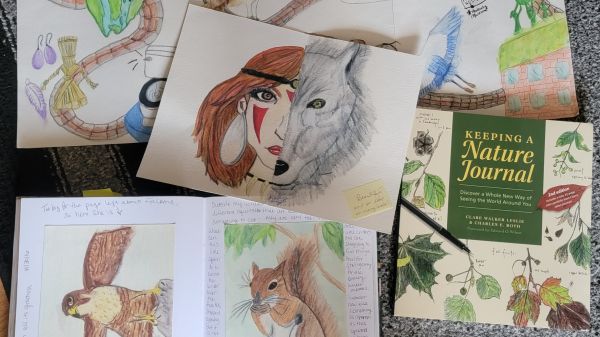Connecting to Change

As a generation, we are faced with many issues surrounding climate change. We bear the frustration of the action or inaction of the generation before us, and the responsibility to facilitate change for the next generation. What kind of world will our children have? Our grandchildren? But how do we begin to help people plan for a future they don’t understand? That we may not understand? We face one of the most significant issues of our lifetime, yet many of us don’t know where to begin to understand how to move forward.
With climate change, education is crucial. But before we can educate ourselves and other generations, we must understand where we fit in the system. Understanding our place in our home is simple, but I’m talking about our physical house, not our home on Earth. But how do we begin to understand our place, our role, in the more extensive ecosystem that is Earth? We begin by learning about our place and connecting to it.
There is an education method called placed-based learning—it highlights the history of a place and how it has changed in connection to the environment, humanity, and sometimes industry, economy, and infrastructure. Taking it a step further, we begin to learn about how we as an individual fit into the place, how our actions affect other things, both living and nonliving, and what we can do to affect the change we desire.
You may be thinking, "Woah, slow down Kristie, this is a lot! How do I even begin to learn about my place? Where can I start?" My advice is to start with the land. There are two approaches you can take: historical and present. With the historical approach, you can start digging into the history of your geographic location and learn how it became to be what it is today, who lived there, and how it changed. I think that the present approach, however, might be the best place to start if you feel lost. The best way to start learning about your place in the present is to simply observe it. Each person is different and will have a different approach. For instance, if you prefer to start with the historical or even something different, you will be connected the way you are meant to.
"[I]t highlights the history of a place and how it has changed in connection to the environment, humanity, and sometimes industry, economy, and infrastructure."
—On place-based learning
Tackling climate change seems like such a monumental task, but we need to remember that it won’t happen overnight. We may not be able to reach our goals in our lifetime, but the most important piece of this puzzle is leaving the tools to do so with the next generation. We can bridge the gap in understanding through education, but the very first step is to help people to connect to their place. In connecting, we can start to learn about how we fit into our immediate ecosystem, and branch out into larger ones like our community, city, state, country, and beyond. Connection leads to understanding, understanding leads to action, and action leads to change, and remember that no action is too small.
So, where do we begin?
It can be simply sitting outside in nature and observing what’s around you. Grab a comfy spot in your backyard and just be present. Notice the grass, trees, birds, insects, and other wildlife. Notice the human items as well, neighbor’s house, furniture, and wood piles. Notice the grass that has just been mown in contrast to the one that hasn’t been mowed all season.
One of the greatest tools I’ve used for this is a nature journal. There are many ways to keep a nature journal, and finding what works the best for you is key. Many guides exist if you’d like examples to read about and follow, but you can also just observe, record, draw and write what you see without any guide. The one that I’ve explored is by Claire Walker Leslie, an amazing nature journalist who provides many resources. There is also a John Muir Laws Guide that is quite good. (Resource links are at the end of this post.)
"Connection leads to understanding, understanding leads to action, and action leads to change, and remember that no action is too small."
—On connecting people to place
It’s amazing what we can find in our place that we never saw before when we sit and be a part of it. Maybe you’re thinking, "But I don’t have a backyard. I just see the building next to mine. What can I do?" Nature can be found in many places, even in the most urban setting. It can be as simple as a potted plant inside. As long as you can find a safe, consistent place that you can go to, it doesn’t have to be at home. It can be a park, a field, or a friend’s place—it can also be at school! Wherever you can go to find your spot in nature is the perfect spot for you.
What you put in your nature journal is entirely up to you. I prefer looking at examples of what others have done to see what may work for me. There are a lot of different guidebooks. There is a nature journaling podcast that is a wonderful resource and can be found in the resources below. I have some of my pages included in a link below for an example! You can see that skill does get better over time, and if you don’t think you’re an artist (you probably are!) you don’t need to share it—it’s for YOU!
Resources:
Pages from my personal Nature Journal


Comments
Kristie....great contribution....thank you for writing this thoughtful Blog post....